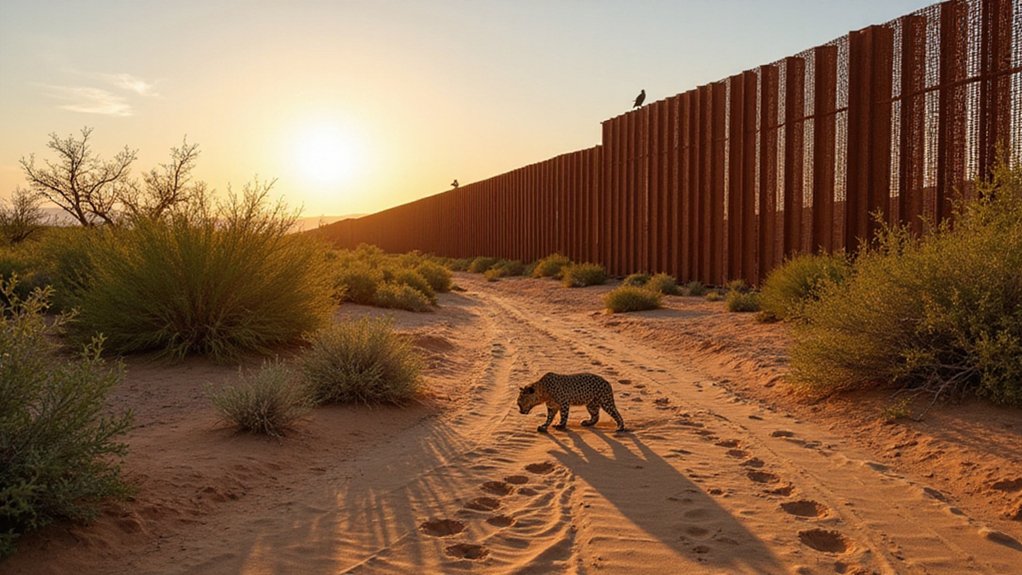Desert solar panels are changing how scientists view renewable energy’s impact on the environment. Recent studies show these installations don’t just generate clean power—they create unexpected habitats. The panels’ shade lowers ground temperatures and helps soil retain moisture, creating mini-oases where plants and animals thrive. “We’re seeing species return to areas where they hadn’t been spotted in decades,” says Dr. Elena Moretti, lead researcher at Desert Ecology Institute. What other ecological benefits might these solar developments hold?
While solar panels in deserts primarily generate clean energy, research shows they’re creating unexpected ecological benefits too. The consistent shade provided by solar panels leads to cooler soil temperatures and reduced evaporation rates in desert environments. This creates a microclimate that’s more hospitable to life than the surrounding harsh desert conditions.
Scientists have measured the ecological health beneath solar panels at 0.4393, markedly higher than both transitional zones (0.2858) and untouched desert areas (0.2802). This improvement comes from the panels’ ability to moderate extreme desert conditions, allowing soil to retain more moisture than exposed areas.
Solar panels create desert oases, with ecological health 57% higher than natural desert conditions.
The enhanced soil quality beneath panels supports more biological activity. Microorganisms thrive in this protected environment, improving nutrient cycling. These changes create distinct ecological zones that didn’t exist before. The improved conditions can support the growth of desert-adapted plants that might struggle in harsher open areas. Despite the minimal maintenance requirements of solar energy systems, these ecological benefits represent an additional advantage beyond energy production.
These microhabitats also affect desert wildlife. While initial construction may disrupt existing habitats, the new environments can create refuge for heat-sensitive species. Small mammals, reptiles, and invertebrates often find new niches in these modified spaces. The shade offers protection during the hottest parts of the day when temperatures in open desert can be lethal.
However, these changes come with potential challenges. The altered conditions might favor non-native or invasive plant species. Large-scale installations can change heat absorption patterns, as solar panels have lower albedo (reflectivity) than desert sand, potentially affecting regional temperatures. These installations can also alter local microclimates, impacting the surrounding flora and fauna in ways that require careful monitoring.
Careful planning is essential to maximize benefits while minimizing disruptions. Studies show that placing solar developments on already degraded lands reduces negative impacts. The Nature Conservancy’s Mining the Sun initiative identifies closed mining lands as ideal locations for new solar installations. Long-term monitoring helps scientists understand the full effects of these installations on desert ecosystems.
What’s becoming clear is that with proper management, solar energy development in deserts doesn’t have to be an ecological trade-off. Instead, it can create new opportunities for biodiversity in these harsh environments while producing clean energy.








